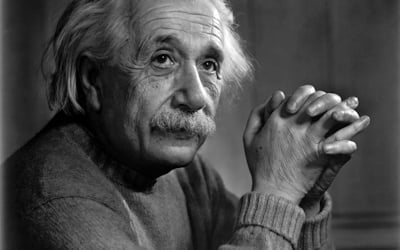Collaboration
So what is Collaboration? The first thing it is not is convincing someone to work for you for nothing with the vague promise you will make it worth their while in the long run.
Let’s look at a few formal definitions:
- Collaboration is working with each other to do a task and to achieve shared goals.
- Collaboration: To work together, especially in a joint intellectual effort.
- Collaborate: to work with another person or group in order to achieve or do something.
Of these, the first I like best. Shared Goals is a key point for me. And it also supports the idea of each party freely bringing something to the other.
Collaboration matters?
Australia has the lowest rate of inter-business Collaboration in the OECD! Seriously!
This is a huge problem. And we see it at every level from Federal Politics down to union engagement with enterprises through to the three million Small Businesses in the SME sector who are all operating in silos and not working together. I have come to the view that this is one of two structural problems in the Australian economy that most prevents us from being competitive. And it is a problem we can’t rely on government fixing. This needs a grass roots revolution since it is attitudes and values based.
The above data was put together by Professor Goran Roos based on OECD statistical data. His role as Thinker in Residence in South Australia was to look at how to revitalise manufacturing in the state. And to solve a problem you have to first understand it. And then understand the different possible solution spaces to work in.
“The solution to today’s problems will require better thinking than got us into them in the first place.” Albert Einstein.
That is probably a paraphrase as he has expressed several versions of this same truth. But the core point, is that more of the same will get you more of the same. To get a better outcome you need better thinking. So for me it is time to think differently. This also leads to Innovation but that is another topic.
So rather than rant I decided to do something to show how we can get beyond the current situation. And was very fortunate to find George Zeidan of Zeidan who are a digital agency that amongst other things can develop custom web API based back ends for pretty much anything and the web and mobile interfaces that go with that.
Successful Endeavours have a lot of experience in the design of remote telemetry devices and data loggers. And we had an existing problem. A water dispensing device that allowed remotely located tank stands to provide water to tankers and record who, when, where, how much and then transport that back over GSM to a back end so that councils can keep track of it. It also had “Over the Air” firmware upgrade capability and “Over the Air” configuration update capability. However the client’s back end was taking forever to build and we had concluded it would never have the features we needed. The web developers were going to kill the opportunity. Another nine months later and obviously still a problem, George Zeidan and I got talking and decided to Collaborate. Eight weeks later we had a working system with a feature roadmap in place and our first sale.
The picture above shows Ray Keefe of Successful Endeavours and George Zeidan of Zeidan, rather like proud parents, with some examples of the internals of hardware devices already supported by the Ritri system. That is the name given to the web API back end product.
The press release for the collaboration effort is available on line at Networking in the Net.
Planned future products to be supported by the system are:
- Corrosion protection data loggers
- Apartment water metering and sub-metering
- Water Bulk Filling Stations
- Septic Tank monitoring systems
- fill in your product idea here…
So this is our official notification that if Australia is open for Business, Successful Endeavours is open for Collaboration.
Successful Endeavours specialise in Electronics Design and Embedded Software Development. Ray Keefe has developed market leading electronics products in Australia for more than 30 years. This post is Copyright © 2014 Successful Endeavours Pty Ltd.











